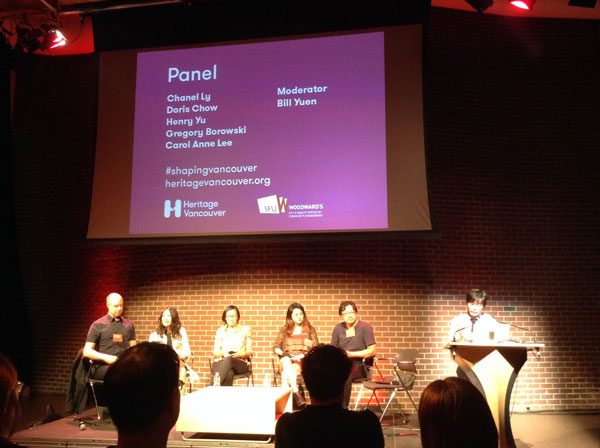Vancouver’s
Chinatown is Canada’s largest and encompasses an ethnic mix of different demographics along with many century-old heritage buildings—some of which have existed as long as Vancouver itself . The City has attempted various times to “revitalize” this area, since it is a popular tourist attraction, and due to the fact that its proximity to Vancouver’s Downtown Eastside sometime raises safety concerns.
Interestingly, as downtown reaches development capacity, Chinatown is becoming increasingly attractive to developers and private investors, potentially leaving old-time residents at risk of being displaced. This raises a number of important questions:
- How should Chinatown approach these increasing pressures?
- Is there really a need to save Chinatown’s past?
- Why Did City Council put so much emphasize on the buildings’ height in their review?
- Does the City’s Historic Area Height Review 2011 really lead to revitalization, maintenance of cultural heritage and creation of more affordable housing in the area, or does it lead towards gentrification?
These where a number of the questions addressed during the last
Shaping Vancouver’s 2016 series called
What is the Vision for Chinatown?. The event was hosted by
Heritage Vancouver and consisted of a panel of five heritage and community experts from different backgrounds, moderated by Bill Yuen. The following is a brief synopsis of the panelists and their take on the issues:
Channel Ly and Doris Chow pointed out the role of the community towards shaping and fostering Chinatown’s rich and diverse history. It was suggested that we should look towards local residents and hear what they have to say, with respect to future transformations.
As a historian and academic,
Henry Yu emphasized the importance of preserving the past in order to remember our history, learn from its mistakes and achievements in order to build a better future. He also pointed out that cultural and tangible policies for heritage are missing in Vancouver.
Architect
Gregory Borowski, on the other hand, engaged the solution from a more neo-liberal approach ,stressing that we need investors in Chinatown in order to generate the cost of non-profit facilities. He also mentioned that, as an architect, he and his firm—
Merrick Architecture—are reusing former Single Room Occupancy (SRO) buildings into affordable housing projects that will house low-income residents. The projects are funded through the provincial government (
BC Housing) as well as the City of Vancouver, who owns the buildings. Another private donor funded a senior housing project, which is important considering that over
3000 Chinese Seniors will need assisted housing in the next 10 years.
Carol Anne Lee, Chair of the Vancouver Chinatown Foundation and Vancouver Chinatown Revitalization Committee, felt that area needs to have a Chinese character in order to keep the neighbourhood relevant to the Chinese community. She has purchased the Ho Ho Restaurant, the
Daisy Garden and another restaurant that is in her own building, accordingly. She also remarked on the significant contribution of the Chinese Immigrants as Human Capital in the late 1800s in building the
Canadian railway that connected British Columbia to the Dominion of Canada.
A member of the Chinatown Action Group who was in the audience pointed out that one big obstacle as to why the Chinese residents are left out from conversations about their neighbourhood is the lack of English Skills. Another important aspect that was raised during the Q & A was the lack of security in many parts of Chinatown, which is a general concern in all of DTES. Accordingly, for neighbourhood’s to be safe, there needs to be enough foot traffic and people looking out for each other. Such an ‘Eyes on The Street’ approach can be achieved, for example, by revitalizing many of the abandoned and deteriorated buildings.
But will such development lead to gentrification?
The answer to the latter was left open. But one certainly left the discussion feeling that it was an adequate reflection of the complex nature of displacement and inclusivity that is a reality in many parts of Vancouver. And all too evident was the fact that a fine balance must be struck between keeping the cultural heritage of a historically significant neighbourhood and transforming it to uphold current standards and needs.
***





